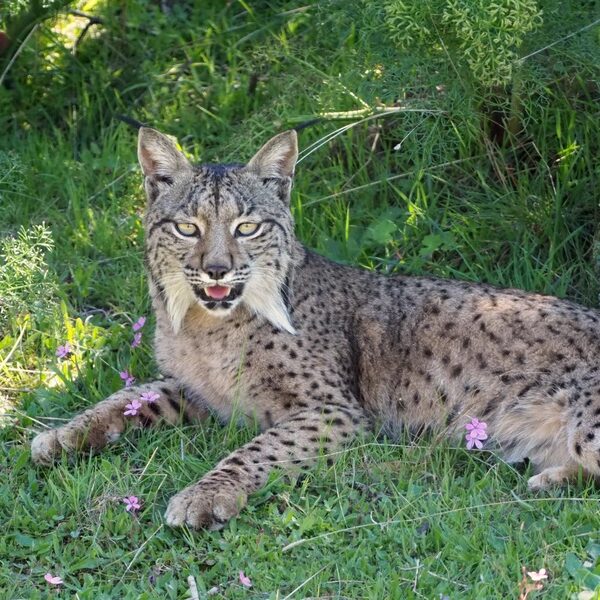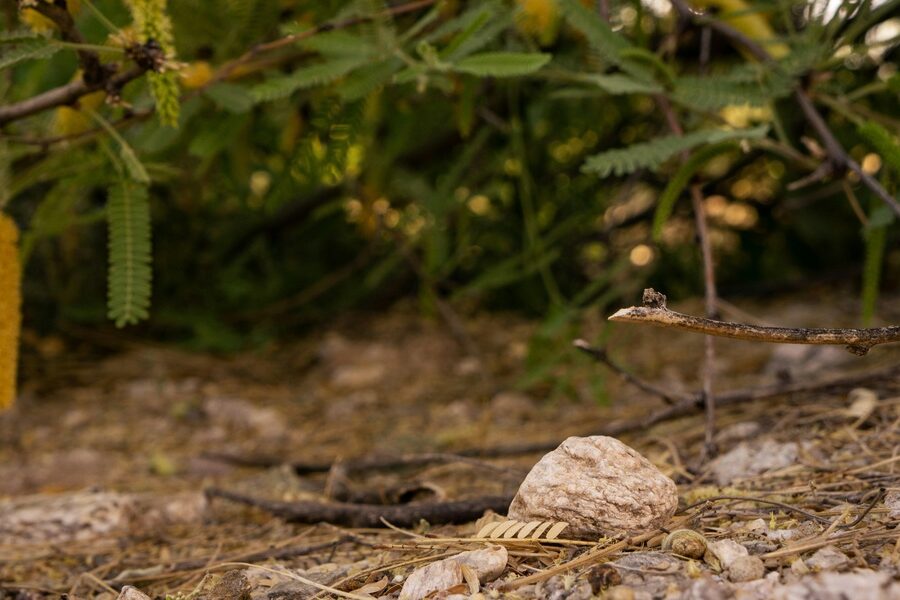Zambia’s landscapes — from the Zambezi floodplains to miombo woodlands and open savanna — support a rich mix of mammals, birds and reptiles. Whether you’re preparing for a safari or just curious about regional wildlife, a quick overview helps you know what to expect and where to look.
There are 59 Zambia’s native animals, ranging from Aardvark to Warthog. The list is organized so that for each species you’ll find the Scientific name,Category,Where to see (Zambia), and practical notes on habitat and distribution — you’ll find below.
Where in Zambia am I most likely to see these animals?
National parks and game management areas such as South Luangwa, Kafue and Lower Zambezi concentrate sightings; look for elephants and large herbivores near water in the dry season, and for predators during dawn and dusk. Local guides and recent park reports will point you to the best specific habitats for a given species.
Are any of these species at risk, and how should I behave when I encounter wildlife?
Yes — some species face threats from habitat loss and poaching; check IUCN status and local guidelines before visiting. Keep distance, avoid feeding or disturbing animals, follow park regulations, and hire licensed guides to minimize impact while maximizing safe viewing.
Zambia’s Native Animals
| Name | Scientific name | Category | Where to see (Zambia) |
|---|---|---|---|
| African elephant | Loxodonta africana | mammal | Floodplains and mopane woodlands; Luangwa, Kafue, Lower Zambezi |
| African lion | Panthera leo | mammal | Open savanna and riverbanks; Luangwa, Kafue, South Luangwa |
| Leopard | Panthera pardus | mammal | Woodland and river-edge habitats; South Luangwa, Kafue |
| Cheetah | Acinonyx jubatus | mammal | Open savanna and grasslands; Kafue, private conservancies |
| African wild dog | Lycaon pictus | mammal | Woodlands and open plains; Lower Zambezi, parts of Luangwa |
| African buffalo | Syncerus caffer | mammal | Floodplains, grasslands; Kafue, Luangwa, Lower Zambezi |
| Hippopotamus | Hippopotamus amphibius | mammal | Rivers and lakes; Luangwa, Zambezi, Bangweulu |
| Nile crocodile | Crocodylus niloticus | reptile | Rivers, lakes and floodplains; Zambezi, Luangwa, Bangweulu |
| Thornicroft’s giraffe | Giraffa camelopardalis thornicrofti | mammal | Woodland and riverine; Luangwa Valley endemic |
| Plains zebra | Equus quagga | mammal | Open grasslands and floodplains; Kafue, Bangweulu, South Luangwa |
| Impala | Aepyceros melampus | mammal | Woodland and savanna; widespread in parks such as Luangwa and Kafue |
| Greater kudu | Tragelaphus strepsiceros | mammal | Woodland and thicket; South Luangwa, Kafue |
| Sable antelope | Hippotragus niger | mammal | Woodlands and floodplain edges; Luangwa, Kafue |
| Roan antelope | Hippotragus equinus | mammal | Savanna and open woodlands; Kafue, Luangwa |
| Eland | Taurotragus oryx | mammal | Open savanna and highlands; Kafue, Southern Zambia |
| Warthog | Phacochoerus africanus | mammal | Open savanna and scrub; widespread in parks like Luangwa and Kafue |
| Puku | Kobus vardonii | mammal | Seasonal floodplains and grasslands; Bangweulu, Kafue flats |
| Red lechwe | Kobus leche | mammal | Marshy floodplains; Bangweulu, Luangwa |
| Kafue lechwe (endemic subspecies) | Kobus leche kafuensis | mammal | Kafue Flats floodplains; Kafue National Park |
| Sitatunga | Tragelaphus spekii | mammal | Swamp and papyrus habitats; Bangweulu swamps |
| Aardvark | Orycteropus afer | mammal | Dry woodlands and savanna; Luangwa, Kafue |
| Ground pangolin | Smutsia temminckii | mammal | Woodlands and savanna; Luangwa, Kafue |
| Vervet monkey | Chlorocebus pygerythrus | mammal | Woodland, riverine and towns; widespread across Zambia |
| Chacma baboon | Papio ursinus | mammal | Rocky outcrops and woodlands; Kafue, South Luangwa |
| Serval | Leptailurus serval | mammal | Wet grasslands and reedbeds; Kafue, Bangweulu |
| Caracal | Caracal caracal | mammal | Dry woodlands and savanna; Kafue, southern Zambia |
| African civet | Civettictis civetta | mammal | Woodlands and riverine; Luangwa, Kafue |
| Rock hyrax | Procavia capensis | mammal | Rocky outcrops and kopjes; South Luangwa, Kafue |
| African fish eagle | Haliaeetus vocifer | bird | Large rivers and lakes; Zambezi, Luangwa, Bangweulu |
| Carmine bee-eater | Merops nubicoides | bird | Riverbanks and sandy cliffs; Luangwa River, Zambezi escarpment |
| Lilac-breasted roller | Coracias caudatus | bird | Open woodlands and savanna; widespread in parks such as Luangwa and Kafue |
| Shoebill | Balaeniceps rex | bird | Shallow swamps and papyrus; Bangweulu wetlands (northern Zambia) |
| Saddle-billed stork | Ephippiorhynchus senegalensis | bird | Large rivers and floodplains; Luangwa, Kafue |
| Kori bustard | Ardeotis kori | bird | Open grasslands and dry plains; Kafue, southern savanna |
| Secretary bird | Sagittarius serpentarius | bird | Open savanna and grassland; Kafue, Busanga plains |
| Pied kingfisher | Ceryle rudis | bird | Rivers, lakes and wetlands; Zambezi, Luangwa, Bangweulu |
| Malachite kingfisher | Corythornis cristatus | bird | River edges and reedbeds; Luangwa, Zambezi |
| Helmeted guineafowl | Numida meleagris | bird | Open woodlands and agricultural edges; widespread in Zambia |
| Southern ground-hornbill | Bucorvus leadbeateri | bird | Open woodland and savanna; Kafue, parts of Luangwa |
| African jacana | Actophilornis africanus | bird | Floating vegetation and shallow lakes; Bangweulu, Kafue flats |
| Nile monitor | Varanus niloticus | reptile | Rivers and wetlands; Zambezi, Luangwa, Bangweulu |
| African rock python | Python sebae | reptile | Woodland and riverine habitats; Luangwa, Kafue |
| Puff adder | Bitis arietans | reptile | Savanna and grasslands; widespread in many parks |
| Black mamba | Dendroaspis polylepis | reptile | Woodland edges and rocky areas; Luangwa, Kafue |
| Leopard tortoise | Stigmochelys pardalis | reptile | Dry savanna and scrub; southern Zambia and Kafue |
| African bullfrog | Pyxicephalus adspersus | amphibian | Seasonal pools and dambos; Kafue, Bangweulu |
| African clawed frog | Xenopus laevis | amphibian | Permanent ponds and slow rivers; Zambia’s lakes and wetlands |
| Reed frog (Common) | Hyperolius marmoratus | amphibian | Marshes, reedbeds and dams; widespread in wetlands |
| Tigerfish | Hydrocynus vittatus | fish | Fast-flowing rivers and main channels; Zambezi, Luangwa |
| Nile tilapia | Oreochromis niloticus | fish | Rivers and lakes; Zambezi, Bangweulu, reservoirs |
| Sharptooth catfish | Clarias gariepinus | fish | Rivers, floodplain pools and lakes; widespread |
| African lungfish | Protopterus amphibius | fish | Flooded plains, seasonal pools; Bangweulu, Kafue flats |
| Lake Tanganyika sardine (Lates stappersii) | Lates stappersii | fish | Lake Tanganyika shoreline (Zambian coast) |
| Tanganyika cichlid (Tropheus moorii) | Tropheus moorii | fish | Rocky nearshore Lake Tanganyika; Zambian shoreline |
| Tsetse fly (savanna species) | Glossina morsitans | insect | Riverine woodlands and miombo; Luangwa, Bangweulu |
| African monarch butterfly | Danaus chrysippus | insect | Open fields, gardens and savanna; widespread |
| African honeybee (wild) | Apis mellifera scutellata | insect | Woodland edges, tree cavities; nationwide |
| Giant African millipede | Archispirostreptus gigas | other | Leaf litter and moist forest floor; Luangwa woodlands |
| Goliath heron | Ardea goliath | bird | Large shallow wetlands and river margins; Bangweulu, Lower Zambezi |
Images and Descriptions
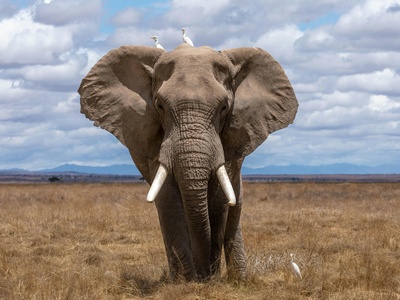
African elephant
Massive herbivore up to 6 tonnes seen in family herds. Common in major parks, known for trunks and tusks. Close views are thrilling but respect distance—bulls can be dangerous when provoked or during musth.
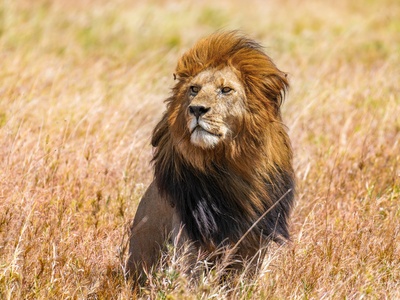
African lion
Iconic social predator forming prides; males have manes. Often seen on early morning or late afternoon drives. Populations fluctuate but Luangwa is one of Zambia’s best places to spot lions hunting or resting.
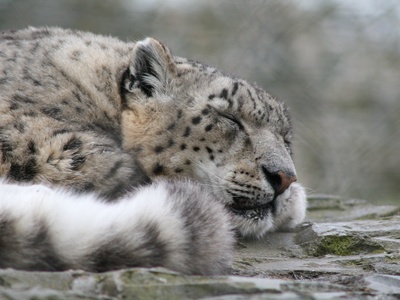
Leopard
Elusive, solitary big cat that often rests in trees. Spotted coat camouflages it well; sightings are prized. Mostly nocturnal and shy but common enough in Luangwa for patient visitors to see.

Cheetah
Fastest land mammal reaching 80–100 km/h in short bursts. More open-country than other big cats, cheetahs are rarer but still present in Kafue and private reserves—best spotted on dawn/dusk drives.
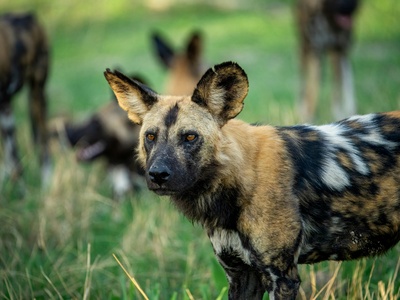
African wild dog
Highly social pack hunter with mottled coat and large rounded ears. Critically endangered regionally but occasional packs persist in Zambia. Exciting to see hunting cooperatively; rare, so sightings are special.
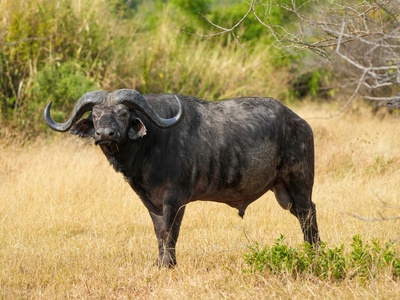
African buffalo
Large, gregarious bovine often in huge herds. Can be dangerous when alarmed, so give them space. Common in Zambia’s parks and a key member of savanna ecosystems.
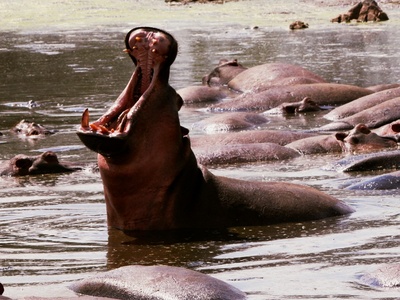
Hippopotamus
Amphibious giant spending days in water and grazing at night. Very territorial in water and surprisingly fast on land; close riverbank views can be dramatic and require caution.
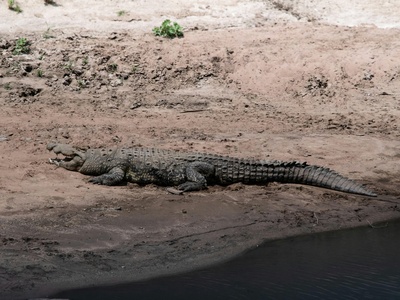
Nile crocodile
Ambush predator along waterways reaching several metres long. Frequently seen basking on banks or lurking at water edges. Powerful jaws make them dangerous—watch riverbanks and avoid swimming in many areas.
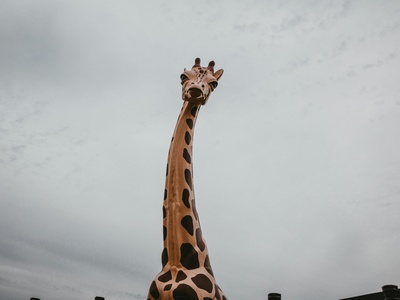
Thornicroft’s giraffe
A unique endemic giraffe of Luangwa Valley, solitary or in small groups. Distinctive long neck and patterned coat make it a flagship species for Zambia; limited range makes it especially special to see.

Plains zebra
Striped equid forming herds; stripes unique to each individual. Common in floodplain ecosystems, often seen grazing with antelopes. Bold, noisy, and easy to spot on open plains.
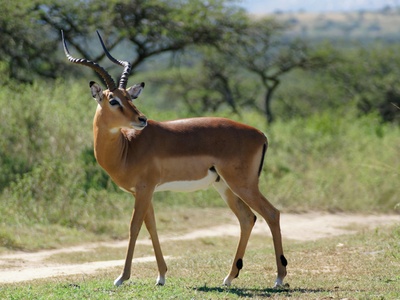
Impala
Graceful medium-sized antelope common across Zambia. Known for leaping displays and forming mixed herds. Frequently seen at waterholes and along game trails—very common and often the first species visitors notice.

Greater kudu
Tall, spiral-horned antelope with striking stripe pattern. Shy and often found in denser habitats; males have impressive twisted horns used in displays and fights. A beautiful but sometimes secretive sight.

Sable antelope
Striking black-and-white-faced antelope with backward-curving horns. Can form large herds and is a visually impressive species. Locally common in suitable habitats and a favorite photographic subject.

Roan antelope
Large reddish antelope with ridged horns and pale face. Shy and less gregarious than sable, roan favors open woodlands. Notable for size and powerful build—sightings are rewarding but less frequent.
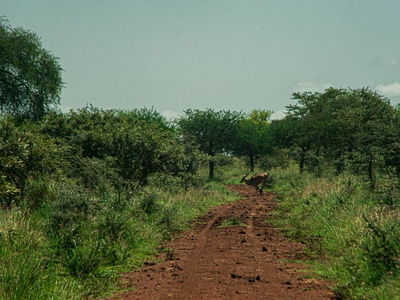
Eland
Largest antelope in Zambia, slow-moving and massive with a dewlap. Often found in small herds, eland are browsers and grazers. Gentle in appearance but able to defend themselves if threatened.
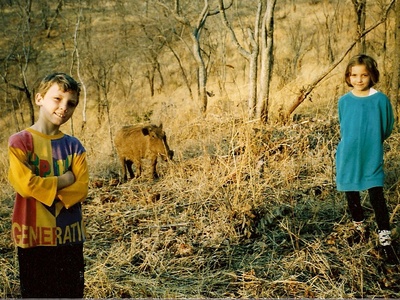
Warthog
Toothed, grunting suids often seen trotting with tails erect. Ungainly-looking with tusks and facial warts, they graze and can be surprisingly fast when alarmed—common and charismatic.
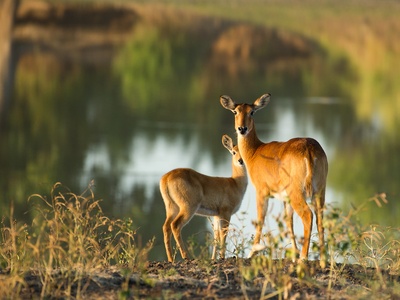
Puku
Medium-sized, reddish antelope tied to wet grasslands and floodplains. Often in large herds during the flood season, puku are a key prey species and are especially abundant in Bangweulu.

Red lechwe
Water-loving antelope with reddish coat and long hooves adapted to boggy ground. Often seen standing in shallow water or fleeing across flooded plains—spectacular when large herds congregate.
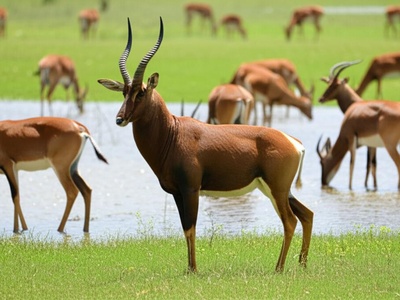
Kafue lechwe (endemic subspecies)
Unique lechwe subspecies restricted to the Kafue Flats. Adapted to seasonal flooding and forming big herds. Conservation-dependent and emblematic of Zambia’s wetland wildlife—best seen in Kafue at the right season.
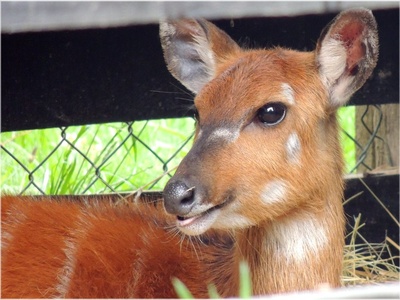
Sitatunga
Exceptional swamp-dwelling antelope with elongated hooves that tread on floating vegetation. Secretive and adapted to dense papyrus, sitatunga sightings are rare but unforgettable in Bangweulu’s wetlands.

Aardvark
Nocturnal, burrowing mammal feeding on termites and ants with a long sticky tongue. Solitary and rarely seen except at night; fascinating anatomy and vital ecological role as a digger and insect predator.

Ground pangolin
Scaly, nocturnal insectivore that rolls into a ball when threatened. Critically threatened by poaching but still present in Zambia. Quiet and elusive; sightings are rare but highly prized by naturalists.

Vervet monkey
Common tree-dwelling monkey with grey fur and black face. Often seen in troops near water and human settlements. Clever and curious, sometimes bold around camps and lodges.
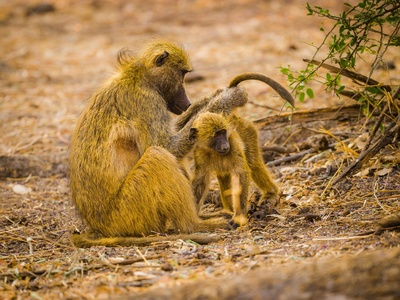
Chacma baboon
Large, terrestrial primate living in troops with complex social structure. Frequently seen around water and cliffs; can be bold near human areas so keep food secure—very observable species.

Serval
Slender medium-sized cat with long legs and large ears specialized for hunting rodents. More active at night and dawn, servals are elegant and listen keenly before pouncing—sightings are exciting but not common.

Caracal
Medium-sized, powerful cat with tufted ears and remarkable jumping ability to catch birds. Elusive and crepuscular; occasional sightings in open woodlands and farmland edges—stealthy and beautiful when seen.
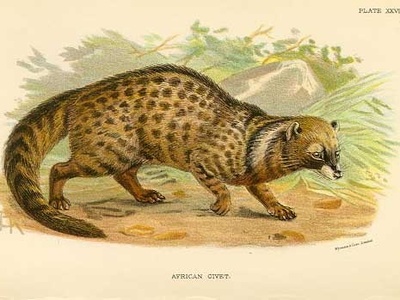
African civet
Nocturnal, omnivorous mammal with distinctive mask-like face and musky scent. Solitary and active at night, often seen along tracks with bold stripes and spots—commonly heard and sometimes spotted after dusk.

Rock hyrax
Small, stout mammal with short ears that basks on rocks in colonies. Surprisingly closely related to elephants biologically. Common on rocky hills and a frequent sight near viewpoints.

African fish eagle
Iconic raptor with booming call, often perched near water catching fish. Distinctive white head and chest with dark body; a symbol of Zambia and commonly seen along major waterways.
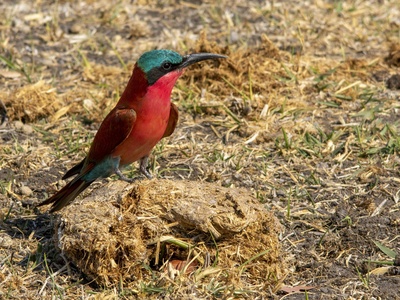
Carmine bee-eater
Vivid red and turquoise bird that nests in riverbank colonies. Spectacular flocking behavior and acrobatic insect catching make it a highlight of river trips—seasonal concentrations are amazing.
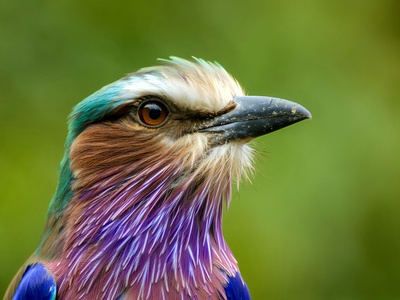
Lilac-breasted roller
Colorful blue, lilac and green bird often perched conspicuously on trees. Frequently seen striking aerial displays; common and a favorite for close-up photos.
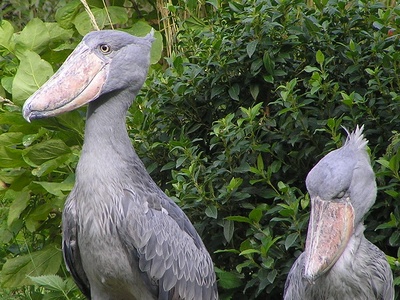
Shoebill
Striking prehistoric-looking bird with massive shoe-shaped bill that stands motionless for long hunts. A rare and treasured sight in Bangweulu—viewing often requires patient, quiet boat trips in swamp channels.
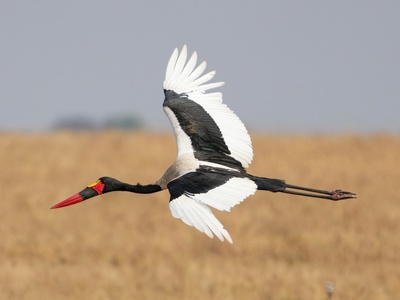
Saddle-billed stork
Tall, elegant stork with bright bill and striking black-and-white plumage. Often seen feeding in shallow water and patrols river margins—impressive and unmistakable wading bird.
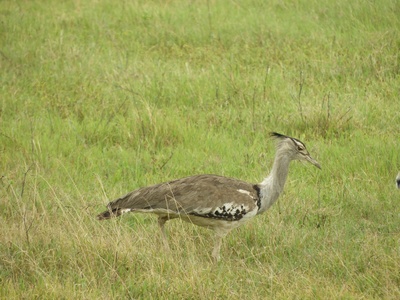
Kori bustard
One of the world’s heaviest flying birds, bulky on the ground with striking plumage. Prefers open habitats where it walks slowly searching for insects and small vertebrates—spectacular when seen displaying.

Secretary bird
Tall, long-legged raptor that hunts on foot, famous for striking snakes and other prey. Distinctive crest and upright posture make it easy to spot; graceful walker across plains.

Pied kingfisher
Black-and-white hovering fisher seen over water, plunging to catch fish. Bold and territorial, often perches on branches overhanging rivers. Widespread and unmistakable to visitors.

Malachite kingfisher
Tiny, bright blue and orange kingfisher that darts from reeds to catch small fish. Best seen along quiet river stretches and calm backwaters—small but vividly colored and charming.
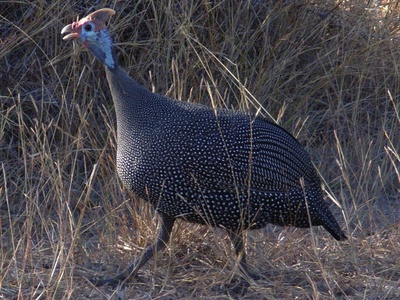
Helmeted guineafowl
Ground-dwelling bird that forms noisy flocks, with spotted plumage and bare helmeted head. Often seen foraging in groups; common and readily observed near camps and roads.

Southern ground-hornbill
Large, terrestrial hornbill with booming calls and striking red facial skin. Lives in small family groups and requires large territories; sightings are memorable due to size and deep voice.
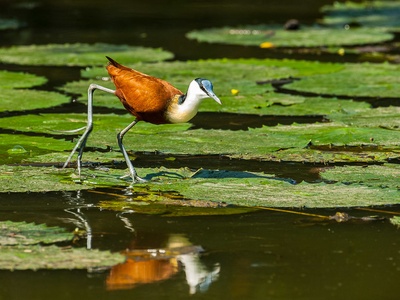
African jacana
Lightweight wader with very long toes enabling it to walk on lily pads. Often seen on floodplains and shallow lakes; a charming and unusual bird to notice on waterways.

Nile monitor
Large semi-aquatic lizard frequently seen basking on banks or swimming. Opportunistic predator and scavenger, impressive in size and movement. Often spotted near water and sometimes near camps.

African rock python
Massive constrictor reptile that ambushes prey near water. Can exceed several metres, rarely dangerous to humans but powerful. Mostly nocturnal and secretive; sightings are dramatic.
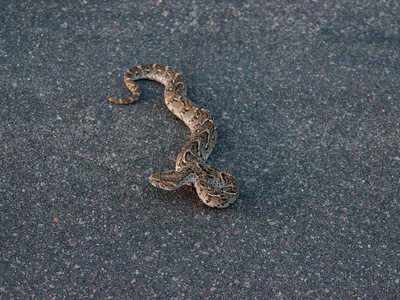
Puff adder
Common, stout venomous viper with excellent camouflage in leaf litter. Responsible for many bites because it holds its ground and is well-camouflaged—watch your step in grass and bush.
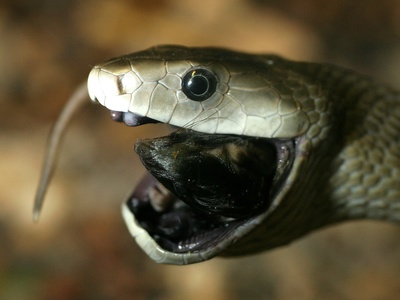
Black mamba
Large, fast, highly venomous snake that prefers warm, dry habitats. Generally avoids humans but can be dangerous when cornered. Respecting distance and avoiding handling is essential—rare but present.

Leopard tortoise
Large terrestrial tortoise with attractive patterned shell. Slow-moving herbivore common in drier areas, often seen grazing on grasses—harmless and interesting to observe at roadside stops.

African bullfrog
Huge burrowing frog that can reach big sizes and emerges in rainy season to breed. Carnivorous and notable for loud calls and explosive breeding events—impressive and often heard as well as seen.
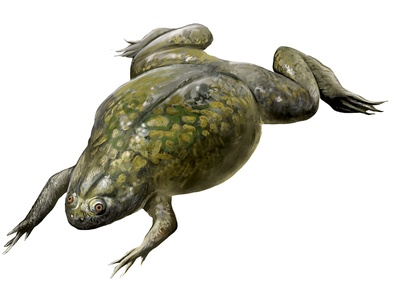
African clawed frog
Aquatic frog with clawed hind feet, often invisible under water. Interesting model species for science and common in water bodies—nocturnal, vocal, and a hearty swimmer.
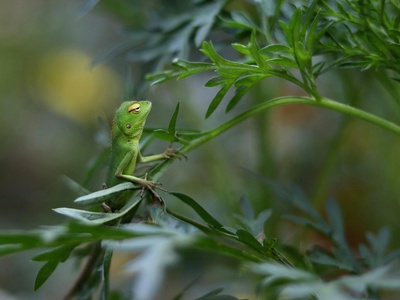
Reed frog (Common)
Small, colorful tree frog often heard at night producing trills and chirps. Vivid patterns and sticky pads help it climb reeds—common in wet seasons and delightful to hear on safari evenings.
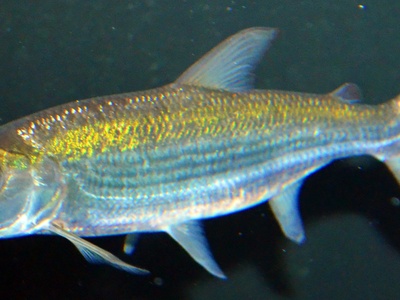
Tigerfish
Fierce predatory freshwater fish known for sharp teeth and powerful strikes. Popular with anglers for explosive fights and prized for big sport catches—common in major river systems.

Nile tilapia
Widespread cichlid commonly seen near river margins and lakes. Important for local fisheries and easily recognizable—frequent in shallow water and a staple food fish in many communities.

Sharptooth catfish
Hardy, nocturnal catfish that survives low-oxygen water and scavenges widely. Often seen by anglers and important in subsistence fisheries—large individuals can be strong fighters on a line.

African lungfish
Ancient fish able to survive drought by burrowing in mud and breathing air. Fascinating biology and adapted to seasonal flooding—an intriguing sight in wetland habitats when present.
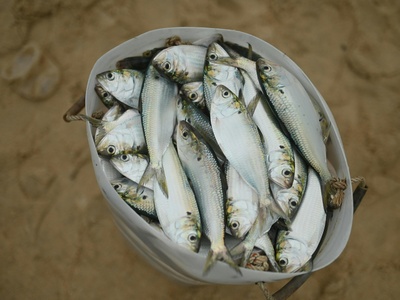
Lake Tanganyika sardine (Lates stappersii)
Small pelagic fish abundant in Lake Tanganyika, important for local fisheries and predators. Schools fuel large food webs and support many cichlid predators—best seen from boats on the lake.
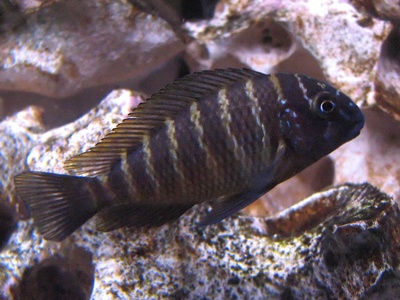
Tanganyika cichlid (Tropheus moorii)
Bright, territorial rock-dwelling cichlid famous in aquariums. Found on rocky littoral zones of Lake Tanganyika and showing spectacular colors and social behaviors—pleasing to divers and boaters.

Tsetse fly (savanna species)
Blood-sucking fly that transmits trypanosomiasis (sleeping sickness) to animals and people. Important to avoid when traveling in endemic zones—often active in shaded woodlands and riverine strips.
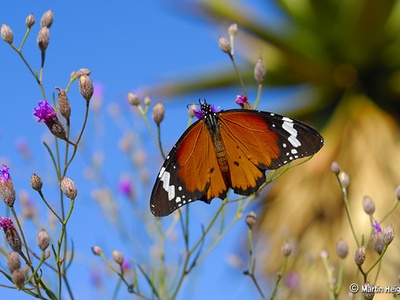
African monarch butterfly
Common, orange-and-black butterfly familiar to many. Feeds on milkweed and migrates locally; eye-catching and easy to spot in many habitats, delighting casual observers and photographers.

African honeybee (wild)
Wild pollinator that forms colonies in tree hollows and occasionally near human dwellings. Important for pollination and honey production—generally not aggressive unless colonies are disturbed.
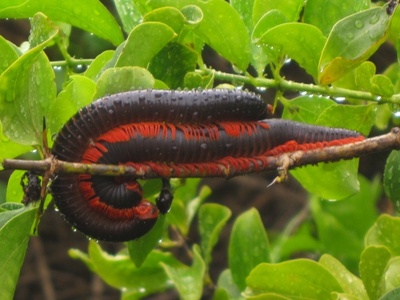
Giant African millipede
Very large, harmless detritivore that curls into a tight spiral when disturbed. Feeds on decaying plant matter and helps nutrient cycling—impressive to encounter but entirely non-threatening.
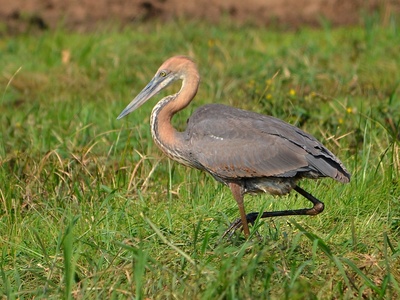
Goliath heron
World’s largest heron, solitary and slow, stalking fish in shallow water. Imposing and prehistoric in appearance, goliath herons are a thrilling wetland sight for birders.

